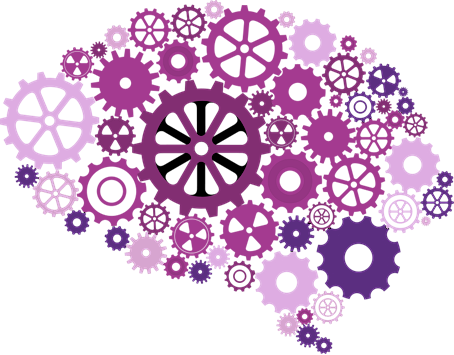
-
3.0T-MRI measures brain activities with very high spatial resolution (in millimeters) by detecting signals generated by altered regional blood flow in the brain and magnetic changes in hemoglobin (blood oxygenation level-dependent: BOLD) with magnetic resonance signals generated by a high magnetic field. We can measure simultaneous recordings of electroencephalogram (EEG) and fMRI, and the device is applied to brain dynamics research as well. The 1.5T-MRI can also examine correlations between volume of gray and white matters and various factors which affect volume by using the voxel-based morphometry (VBM) method based on information on brain configuration, and fiber tracking using Diffusion tensor imaging technology. Some of the advantages due to its ultra-high magnetic field of 3.0 tesla are that research results can be obtained even if the number of subjects who meet the criteria are small, and the time required for experiments are shortened as well, putting less burden on subjects. In experiments using this device, since speech and visual stimuli can be used as usual, various responses can be obtained. For example, speech responses and oculomotor measurement are dealt with simultaneously. Thus, the 3.0T-MRI is a state-of-the-art device for fMRI experiments.

3.0T-MRI:

The fusion of EEG
and fMRI measurement:
-
This machine is designed for MRI application on small animals such as mice and rats. MRI neuroimaging modality is used not only to study basic neuroscience, but also in the fields of pharmaceutical and genetic research. The 7T PharmaScan is equipped with three types of quadrature resonator coils (23mm for the mouse brain, 38mm for the rat brain and 60mm for the body) and has a maximum gradient of 300mT/m. As is the case with our human 3T MRI, all standard MRI applications (e.g. fMRI, ASL, angiography, DTI and spectroscopy) are regularly available. In addition to the MRI scanner, peripheral equipment such as an electric stimulator, animal ventilator, end-tidal CO2 monitor, MRI-compatible pulse-oximeter, and ECG/respiration/temperature monitor are available. We completed installation of the 7T-MRI in March of 2009. Since then, we have launched several collaborations in and outside of Tohoku University.

7T-MRI:

-
NIRS can measure oxygenated hemoglobin change and deoxygenated hemoglobin change using differences in near-infrared absorption due to the level of oxygenation of hemoglobin. Unlike fMRI, the subject’s head does not need to be fixed to an experimental bed. Therefore, NIRS can measure brain activities when a subject is in motion in a natural environment. Portable type NIRS was introduced in 2008, and the measurement in outdoor has became possible.

Measurement using NIRS:

Portable type NIRS (pilot model)
Produced by Hitachi, Ltd.,
Advanced Research Laboratory:
Brain activation during handwriting measured by NIRS:

-
In collaboration with Hitachi, Ltd., we developed an ultra-compact NIRS system. (1) The light-weight, battery-driven and wireless headset enables us to measure the prefrontal brain blood-flow change of a person who behaves freely in a daily life. (2) The system is capable of measuring, recording and displaying blood-flow data of up to 20 people simultaneously. (3) The headset has a built-in noise-reduction mechanism. Thus, the system is especially useful in studying how multiple brains activate and change their relationship in daily social situations, such as schools and offices, where many people interact and communicate with each other.

Measurement using Ultra-compact NIRS:

Ultra-compact NIRS:

Simultaneous measurement of 20 people:

-
We have three types of eye-tracking systems; (1) a glass type which enables measurement of freely moving subjects, (2) a desktop type which is suitable for measurement of subjects working on PC display, and (3) a MR-compatible type which is combined with functional MRI studies. Their data on eye movements, fixation, pupil diameter, and blinking provide useful information in exploring perceptual, affective, and cognitive processes.

Desktop type:

Glass type:

MR-compatible type:

